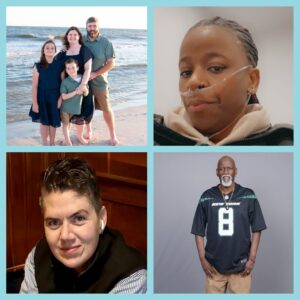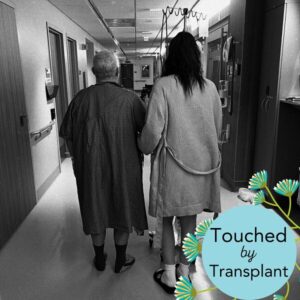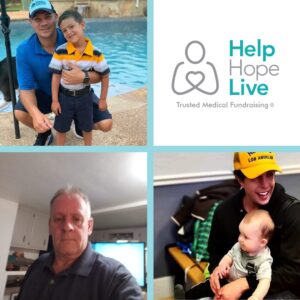Susan “Suz” Welch had been living with severe arthritis for years when falls related to the condition caused her spinal cord to collapse in 2014. She is paralyzed from the waist down and continues to pursue rehabilitation to improve her mobility and maintain her independence. Suz explains how wheelchair photography and adaptive technology have had an impact on her life.

Suz continues to grow her love of photography through technology
I am 75. I have been involved with technology on some level since I was a kid. My father was a body and fender professional and I spent a lot of time at his auto shop. When I was 11 or 12 I used a table saw at school and cut off my finger and damaged three others–that’s when I got my first experience with therapy, to get my fingers working again. I learned to type with three fingers and became just as fast as anyone else in the class on an old manual typewriter.
As an adult, I was the executive director of a local not-for-profit organization for many years. I directed a year-round camp facility in which we did darkroom photography and, later, digital photography. I also participated in a technology workshop in which I helped to teach young people and their parents how to use tablets and smartphones to learn more about the outdoors–for example: using Audubon identification books on tablets to identify birds in the wild.
After I retired in 2005, I directed three different camps where we used digital cameras and small printers. I found that some kids with behavioral challenges could focus better after learning how to use cameras. We saw great results.
Since I had been active for many years as a camper, counselor and camp director, it was very hard to accept becoming a paraplegic. Until my last fall, I was always able to get up and continue doing things. But the last fall crushed my spine. I was not willing to accept it at all. I thought I would get better and be able to walk again. I bet I asked four or five times every day why I could not do what I used to do. It was explained to me over and over again. I think I still have problems accepting my condition.

“It was very hard to accept becoming a paraplegic.”
2010 was my last summer moderating camps. I pursued surgery to build a curve in my spine to enable my back to support me the way it should. Additional procedures helped to reinforce my spine so it could not bend and crush my spinal cord. Before the surgery, I could not stand, walk or sit for longer than 5 minutes because the pain was too severe. Immediately following surgery, I had no feeling from my chest through my legs. I was in an acute rehab program for six weeks in 2014, and that’s when I learned how to operate a power chair.
After I was released from the acute rehab unit, I went to a therapist, Kimbra Korte in Des Moines, Iowa. Kimbra challenged me every time I was there. I went two times a week, because everyone told me there was no way to know what I might get back. I started learning to do things again, but it was very slow progress.
I rode an FES bike in Des Moines and then I got an FES bike for my home. I ride two days a week, then walk with a walker one day, then do two more days on the bike and increase the resistance every five sessions. My walk is not like everyone else’s: I have to look at my feet when I walk, because I cannot tell where they are.

“It was very slow progress” when Suz first entered rehab
In the beginning, I had to use a lift to get from my bed to my chair. Now, I can get to the side of the bed, use a belt and a walker and transfer to my chair. I reverse it in the evening. I can walk from one wall in our living room to a regular chair 15 feet away. I can walk about 60 feet outside, too.
My caregiver, Carolyn, was my camp nurse from 1998 to 2010. She and her four kids moved in with me. She is now retired.
Since I have been using the power chair, wheelchair photography has been a great outlet for me. I treat my chair like a four-wheeler and go to the pasture and down a dirt road every day. I have been taking pictures all my life, and I have always done photography with a darkroom. Since my injury, I had to give up the darkroom since it was in the basement. I donated my equipment to a local school and hunted all over for some sort of adaptive tech for my chair since a tripod or monopod would not work.

“I am so happy with the equipment that it is my pleasure to share my story.”
BlueSky Designs is a company that creates multiple adaptive devices that can be attached to a wheelchair: someone who uses a wheelchair, like me, can add a tray, computer, laptop, phone or camera plate to their chair. I was able to get an adapted camera component for my chair from BlueSky Designs. The component attaches to my chair so I can take photographs from my chair with the camera directly in front of me.
When I went to a local camera shop, all of the employees and the owner came out to see my device. They were so excited–they had been trying to help other people with wheelchairs to adapt their cameras and this was a brand new solution.

An adaptive device allows Suz to take pictures from her chair
I will continue to rely on fundraising with HelpHOPELive to help me cover the cost of adaptive equipment. My fundraising has mostly happened with just a few close friends, some of whom were campers of mine during 1961 and ’62. I am so happy with the equipment I have benefited from that it is my pleasure to share my story. I entered three pictures into a local contest [pictures below], and one of them is now hanging in the local gallery for six weeks! I am making photo cards that I hope to sell at local farmer’s markets.
I would love to be able to drive again and have my four-wheeler adapted so I can use it. I have gotten stuck in the mud with my chair three or four times (I am currently forbidden from going in any mud!). I live in the country, and I donated 16 acres of my land to Camp Hantesa so they could continue a riding program I had started in the 70s. Now they lease the horses so I can still use the 16 acres, and Ledges State Park is in my backyard, so I get to see birds, deer, raccoons, opossums, skunks and more. There are a lot of places I’d like to visit with the four-wheeler.
Suz fundraises with HelpHOPELive for out-of-pocket expenses including caregiver costs and rehabilitation to improve leg circulation and muscle strength. Would additional access to mobility technology improve your daily life? Start a fundraising campaign with our nonprofit at helphopelive.org.
Susan “Suz” Welch had been living with severe arthritis for years when falls related to the condition caused her spinal cord to collapse in 2014. She is paralyzed from the waist down and continues to pursue rehabilitation to improve her mobility and maintain her independence. Suz explains how wheelchair photography and adaptive technology have had an impact on her life.

I am 75. I have been involved with technology on some level since I was a kid. My father was a body and fender professional and I spent a lot of time at his auto shop. When I was 11 or 12 I used a table saw at school and cut off my finger and damaged three others–that’s when I got my first experience with therapy, to get my fingers working again. I learned to type with three fingers and became just as fast as anyone else in the class on an old manual typewriter.
As an adult, I was the executive director of a local not-for-profit organization for many years. I directed a year-round camp facility in which we did darkroom photography and, later, digital photography. I also participated in a technology workshop in which I helped to teach young people and their parents how to use tablets and smartphones to learn more about the outdoors–for example: using Audubon identification books on tablets to identify birds in the wild.
After I retired in 2005, I directed three different camps where we used digital cameras and small printers. I found that some kids with behavioral challenges could focus better after learning how to use cameras. We saw great results.
Since I had been active for many years as a camper, counselor and camp director, it was very hard to accept becoming a paraplegic. Until my last fall, I was always able to get up and continue doing things. But the last fall crushed my spine. I was not willing to accept it at all. I thought I would get better and be able to walk again. I bet I asked four or five times every day why I could not do what I used to do. It was explained to me over and over again. I think I still have problems accepting my condition.

2010 was my last summer moderating camps. I pursued surgery to build a curve in my spine to enable my back to support me the way it should. Additional procedures helped to reinforce my spine so it could not bend and crush my spinal cord. Before the surgery, I could not stand, walk or sit for longer than 5 minutes because the pain was too severe. Immediately following surgery, I had no feeling from my chest through my legs. I was in an acute rehab program for six weeks in 2014, and that’s when I learned how to operate a power chair.
After I was released from the acute rehab unit, I went to a therapist, Kimbra Korte in Des Moines, Iowa. Kimbra challenged me every time I was there. I went two times a week, because everyone told me there was no way to know what I might get back. I started learning to do things again, but it was very slow progress.
I rode an FES bike in Des Moines and then I got an FES bike for my home. I ride two days a week, then walk with a walker one day, then do two more days on the bike and increase the resistance every five sessions. My walk is not like everyone else’s: I have to look at my feet when I walk, because I cannot tell where they are.

In the beginning, I had to use a lift to get from my bed to my chair. Now, I can get to the side of the bed, use a belt and a walker and transfer to my chair. I reverse it in the evening. I can walk from one wall in our living room to a regular chair 15 feet away. I can walk about 60 feet outside, too.
My caregiver, Carolyn, was my camp nurse from 1998 to 2010. She and her four kids moved in with me. She is now retired.
Since I have been using the power chair, wheelchair photography has been a great outlet for me. I treat my chair like a four-wheeler and go to the pasture and down a dirt road every day. I have been taking pictures all my life, and I have always done photography with a darkroom. Since my injury, I had to give up the darkroom since it was in the basement. I donated my equipment to a local school and hunted all over for some sort of adaptive tech for my chair since a tripod or monopod would not work.

BlueSky Designs is a company that creates multiple adaptive devices that can be attached to a wheelchair: someone who uses a wheelchair, like me, can add a tray, computer, laptop, phone or camera plate to their chair. I was able to get an adapted camera component for my chair from BlueSky Designs. The component attaches to my chair so I can take photographs from my chair with the camera directly in front of me.
When I went to a local camera shop, all of the employees and the owner came out to see my device. They were so excited–they had been trying to help other people with wheelchairs to adapt their cameras and this was a brand new solution.

I will continue to rely on fundraising with HelpHOPELive to help me cover the cost of adaptive equipment. My fundraising has mostly happened with just a few close friends, some of whom were campers of mine during 1961 and ’62. I am so happy with the equipment I have benefited from that it is my pleasure to share my story. I entered three pictures into a local contest [pictures below], and one of them is now hanging in the local gallery for six weeks! I am making photo cards that I hope to sell at local farmer’s markets.
I would love to be able to drive again and have my four-wheeler adapted so I can use it. I have gotten stuck in the mud with my chair three or four times (I am currently forbidden from going in any mud!). I live in the country, and I donated 16 acres of my land to Camp Hantesa so they could continue a riding program I had started in the 70s. Now they lease the horses so I can still use the 16 acres, and Ledges State Park is in my backyard, so I get to see birds, deer, raccoons, opossums, skunks and more. There are a lot of places I’d like to visit with the four-wheeler.
Suz fundraises with HelpHOPELive for out-of-pocket expenses including caregiver costs and rehabilitation to improve leg circulation and muscle strength. Would additional access to mobility technology improve your daily life? Start a fundraising campaign with our nonprofit at helphopelive.org.











